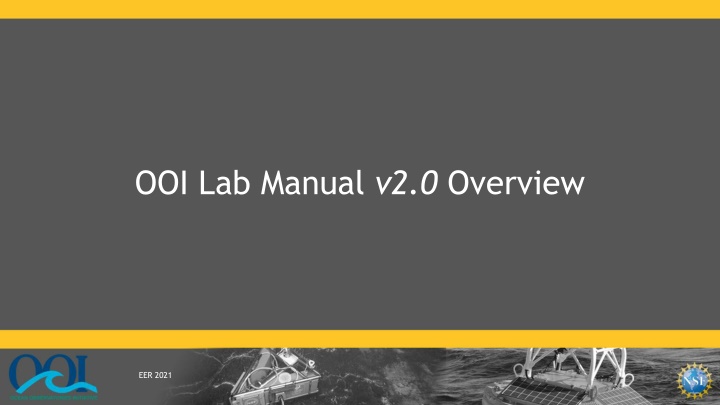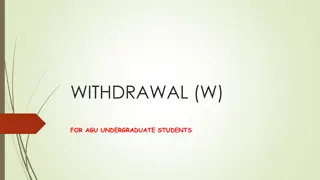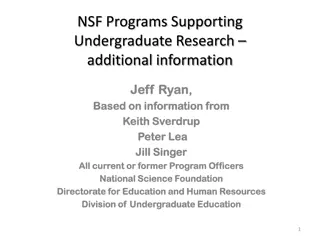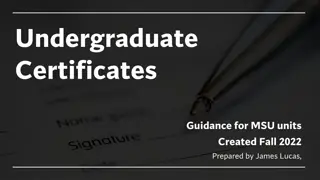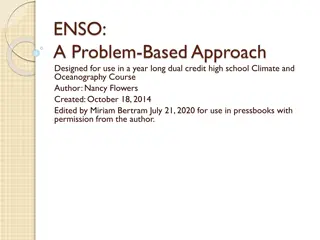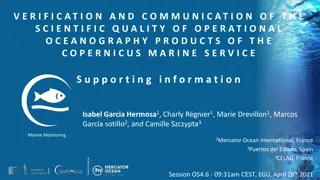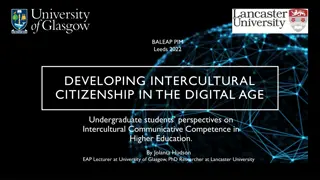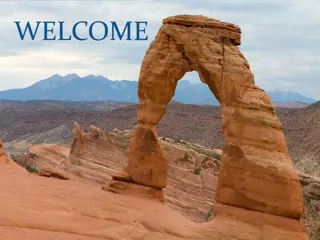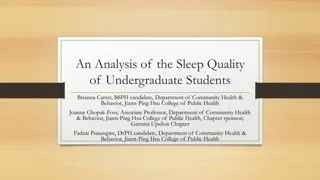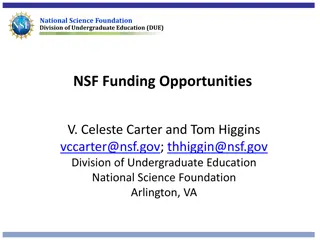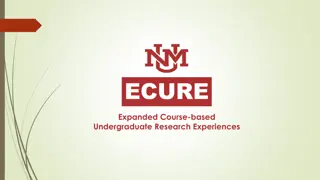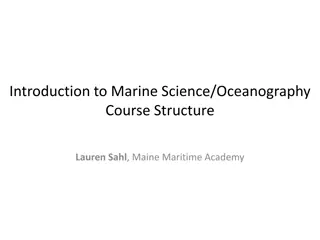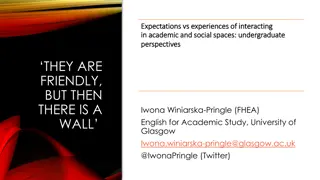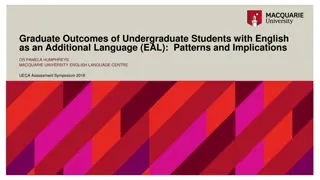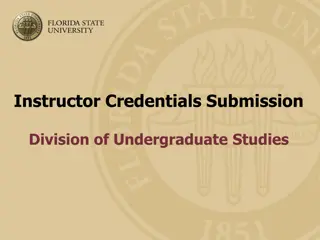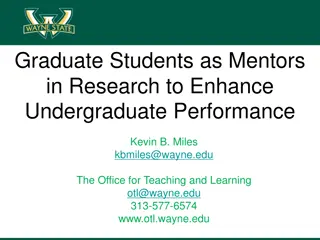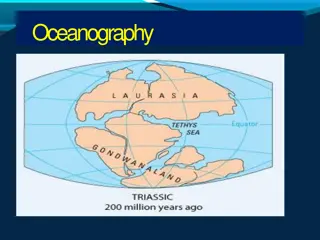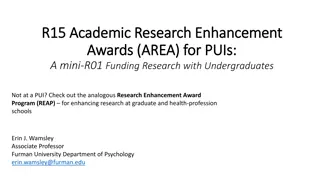Developing Oceanography Data Activities for Undergraduate Students
Empower undergraduate students by providing engaging data activities aligned with oceanography classes. The manual aims to enhance data literacy and critical thinking skills, reinforcing scientific questioning, analysis, and synthesis. It offers real-world context for key oceanography concepts and caters to instructors with varying science backgrounds for versatile implementation.
Download Presentation

Please find below an Image/Link to download the presentation.
The content on the website is provided AS IS for your information and personal use only. It may not be sold, licensed, or shared on other websites without obtaining consent from the author.If you encounter any issues during the download, it is possible that the publisher has removed the file from their server.
You are allowed to download the files provided on this website for personal or commercial use, subject to the condition that they are used lawfully. All files are the property of their respective owners.
The content on the website is provided AS IS for your information and personal use only. It may not be sold, licensed, or shared on other websites without obtaining consent from the author.
E N D
Presentation Transcript
OOI Lab Manual v2.0 Overview EER 2021
Inspiration for the OOI Lab Manual Wouldn t it be great to have a lab manual of OOI data activities aligned to our oceanography classes? Dr. Sid Mitra (East Carolina U) EER 2021
Goals of the manual Build data literacy and critical thinking skills in undergraduate students using authentic ( messy ) scientific data Engage students with data activities that reinforce student confidence in scientific questioning, data analysis, and synthesis Provide a real-world context for key concepts in oceanography EER 2021
Lab manual audience Provide instructors, with varying science backgrounds, data activities that are online and ready for implementation Appropriate for a variety of Introductory Oceanography (or similar geosciences) courses at 2YC or 4YC for majors or non-majors Follow a typical oceanography course sequence but can be used as stand-alone modules Flexible for use in F2F, online or hybrid lecture or lab courses EER 2021
Design of data activities Based in learning science: Hotaling et al. (2019) University of California Lawrence Hall of Science EER 2021
Orientation First carefully examine a novel dataset or visualization: data source variables and units graph axes (including scales) maxima and minima gaps and outliers EER 2021
Interpretation Interpret data (without speculation): variability trends correlation EER 2021
Application Apply prior knowledge: recognize correlation vs. causation compare to known pattern develop hypothesis or conclusion, supported by evidence from the data EER 2021
Reflection (and synthesis) Reflect on the meaning: Analyze data limitations Relate to known phenomenon Evaluate implications of trends or patterns Connect to practical applications EER 2021
Alignment to Intro Oceanography curriculum OOI science themes and data availability common Oceanography textbooks Lab Manual chapters EER 2021
Alignment to Intro Oceanography curriculum Topic Ocean geography Chapter Lab 1: Introduction to the OOI, the collection of oceanographic data Ocean technology Lab 1: Introduction to the OOI, the collection of oceanographic data Data skills for oceanography Lab 2: Building data skills Marine Geology Lab 3: Plate tectonics and the seafloor Lab 4: Seafloor changes in a volcanically active setting Lab 5: Investigating density stratification Ocean Chemistry Physical Oceanography Lab 6: Waves generated by large storms Biological Oceanography Lab 7: Primary production Lab 8: Anoxic events EER 2021
Peer review Fall 2020 pilot implementation Sample responses: o The interactive graphics were excellent. It allowed students to explore the dataset and to see how the variability changes as you view the data over different time periods. o [students] were curious and surprised, and engaged. I think the unit actually set a tone of curiosity that persisted through the term Revisions based on pilot tester feedback: o Additional scientific background and definitions of key terms o Recalibration to meet needs of introductory courses o Increased focus on asynchronous online (while supporting other modalities) Seeking additional pilot testers for Fall 2021 more on this later EER 2021
Lab Manual structure Each chapter contains: Introductory page oHook, brief background, key terms 3-4 data activities ofollow orientation-interpretation-application-reflection model oscaffolded to increase in complexity obased around interactive data widgets Instructor guide olearning objectives, additional scientific background, teaching tips, links to related resources EER 2021
Walk through of Lab 1 https://datalab.marine.rutgers.edu/ooi-lab-exercises/lab-1-the-collection-of-oceanographic-data/ EER 2021
Meet with Lab Authors/Implementers (Breakout Rooms) EER 2021
Breakout Rooms: Table of Contents: https://datalab.marine.rutgers.edu/ooi-lab-exercises/ Room Lab 2 Lab 2 Building Data Skills Room Labs 3&4 Lab 3 Geology Plate Tectonics and the Seafloor Lab 4 Geology Sea Floor Changes in a Volcano Room Labs 5&6 Lab 5 Ocean Chemistry Density and Stratification Lab 6 Ocean Physics Waves Generated by Large Storms Room Labs 7&8 Lab 7 Biological Oceanography Primary Production Lab 8 Anoxic Events Solve the mystery of the dying crabs Instructions: Click Breakout Rooms in your meeting controls. Hover your pointer over the number to the right of breakout room you wish to join, click Join, then confirm by clicking Join. Participants not joined with the desktop or mobile app (version 5.3.0 or higher) will not be able to self- select a breakout room. The host will need to facilitate moving these participants manually. EER 2021
